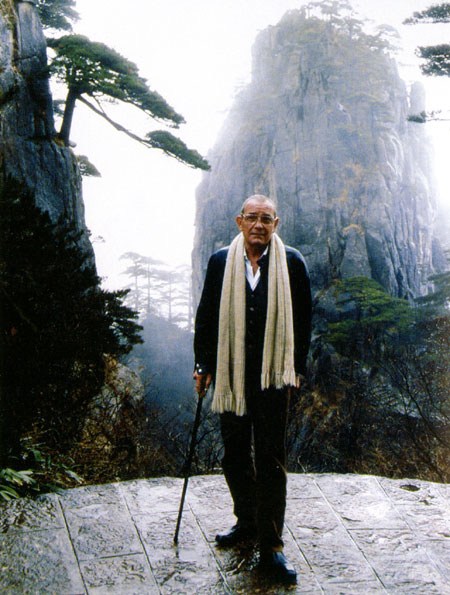 |
|
Ellsworth on Mount Huangshan in Anhui province during his trip to China in 1995.[Photo/China Daily]
|
He was the first to bring Ming Dynasty furniture to the West in the 1950s. He made himself an expert on it and wrote a book, Chinese Furniture: Hardwood Examples of the Ming and early Ch'ing Dynasties, in the 1970s, even earlier than Chinese scholars' books on the subject.
Because of his obsession with Chinese art and his unique taste, in the 1960s, Ellsworth began collecting Chinese paintings of the 19th and early 20th centuries, a period that has been neglected by art historians.
Ellsworth's collecting of Chinese art reached a climax when China and the US established diplomatic ties in the 1970s, says Xie Fei, head of Chinese painting and calligraphy at Christie's.
Xie says Ellsworth was a big fan of Shi Lu (1919-1982), a well-known Chinese artist who was a master at painting landscapes and flowers. The collector visited Shi Lu's family members many times and bought lots of Shi's works from them in the last century.
In addition to his collection, Ellsworth also set up the Chinese Heritage Art Foundation in Hong Kong in the 1990s, dedicated to repairing the ancient houses of the Ming and Qing (1644-1911) dynasties in Huangshan in Anhui province. At that time, most Chinese didn't realize the value of the structures in Huangshan's ancient villages.
Although Ellsworth had done much in Chinese art, his name became known in China only after 2000, when he donated a warrior stone carving to the China National Museum. That object was a rare art treasure dating back to between 907 and 960, a typical stone carving of its time.
It was in 2003 that Ellsworth made a big splash among Chinese collectors and antique circles. He sold a treasured calligraphy of Chunhua Ge Tie collection at a low price of $4.5 million to Shanghai Museum, though a Japanese buyer offered $11 million for it. The collection engraved many masters' calligraphy works before the Song Dynasty (960-1279).
According to earlier reports, Ellsworth said that the calligraphy belonged to China. He would only sell it to Chinese buyers despite active buyers outside China offering much higher prices.
